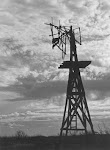The following is a continuation of Georgia Shinaberry's description of social life in Pocahontas County, West Virginia in early 1800s. These passages were later edited by Price for his "Historical Sketches of Pocahontas County."
"Shooting matches were also common in the county, especially in the fall months. John Barlow on Buckley mountain was passionately fond of shooting. But the rules of his church, the Methodist Episcopal, forbade shooting for prizes. A shooting match was arranged for the neighborhood, and he attended as a spectator. The main prize was a quarter of beef. Near the close of the match a neighbor asked Mr. Barlow to shoot as a substitute for him. Mr. Barlow consented, took careful aim, and pierced the center, thus gaining the savory piece of fat beef. A scrupulous fellow member felt honor bound to report him to the Presiding Elder. He was asked to appear before the quarterly conference for trial, but it was proven that he shot only to accommodate a friend and the case was dropped.
Bear hunting, fox chasing, and the hunting of panthers was done partly for pleasure, but partly because of a necessity for the protection of life and property. Bears, foxes, panthers, and wild cats were so plentiful in Pocahontas that it would have been impossible to raise livestock and poultry if they had not killed these wild animals first.
Basket dinners and outdoor picnics were also very popular, especially during the latter part of the 1800’s. They are still held quite often in many parts of the county.
Training and general Muster days were also great occasions for the men of the county.
Apple cuttings came into popularity after orchards began to bear fruit and always took place in the autumn at apple butter making time. All the young people of the community would come and help pare the apples for the butter to be made the next day. After the apples were all pared, refreshments were served, and if it was not too late, games were played or they had a dance.
Dances as the pioneer knew them were what we know as the square or barn dance. They also danced the Virginia reel. In the square dance, figures were called and they danced to the music made by the “fiddle” and the banjo. It usually lasted until morning.
Hay rides were also popular in the late 1800’s. When a good deep snow fell, some young man would “hitch up” his father’s team, pile the sled full of hay, heat some rocks to keep the feet warm, and take a sled load of the neighbor boys and girls for a ride. Or if more privacy was desired, each young man took his girlfriend in a one horse sleigh.
Spelling bees were popular too, during the latter 1800s and early 1900’s.
Huskings – Usually there was a managing boss and the men were chosen off in teams. Also every red ear was considered good luck and whoever got the most red ears was considered champion. Quiltings usually took place on the same night of the husking. Around eleven o’clock, both the husking and the quilting were suspended. Supper was served, and then came the “hoe-down” or square dance. In some communities, the man who got the most red ears had the privilege to kiss the prettiest girl at the quilting."

I learn something every day. I had no idea there were panthers in the U.S. Lord knows where I thought they lived but there you are. And I had to look up what red ears were. And what is a basket dinner?
ReplyDelete